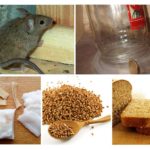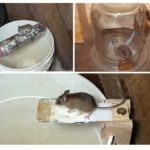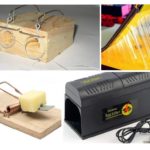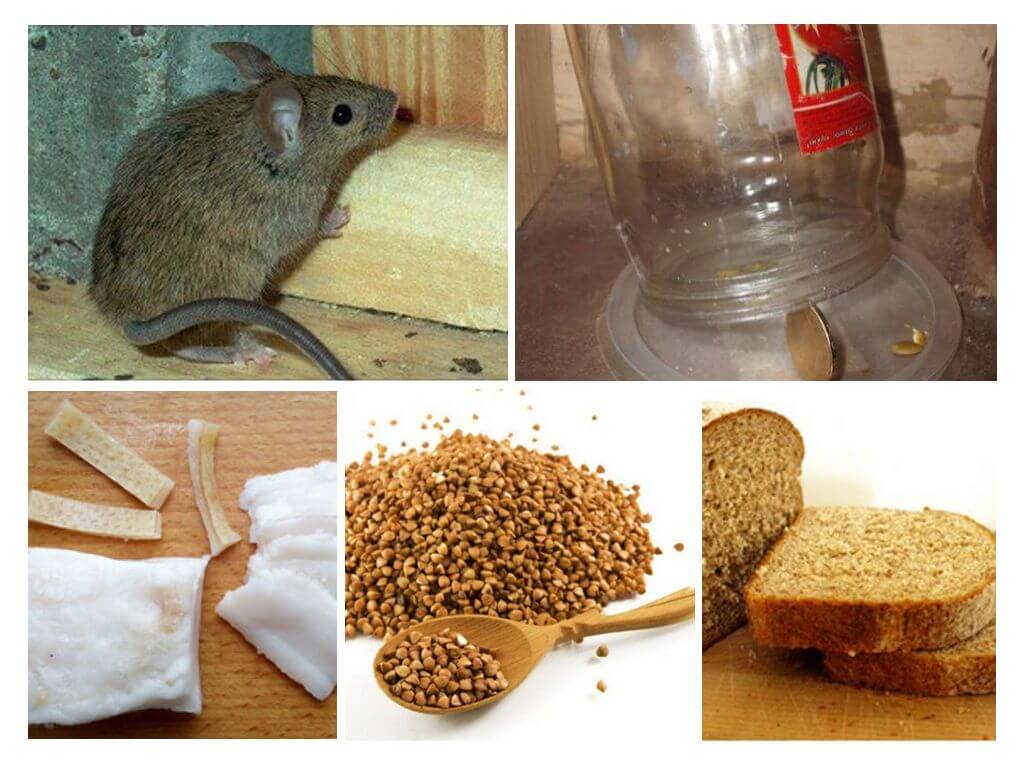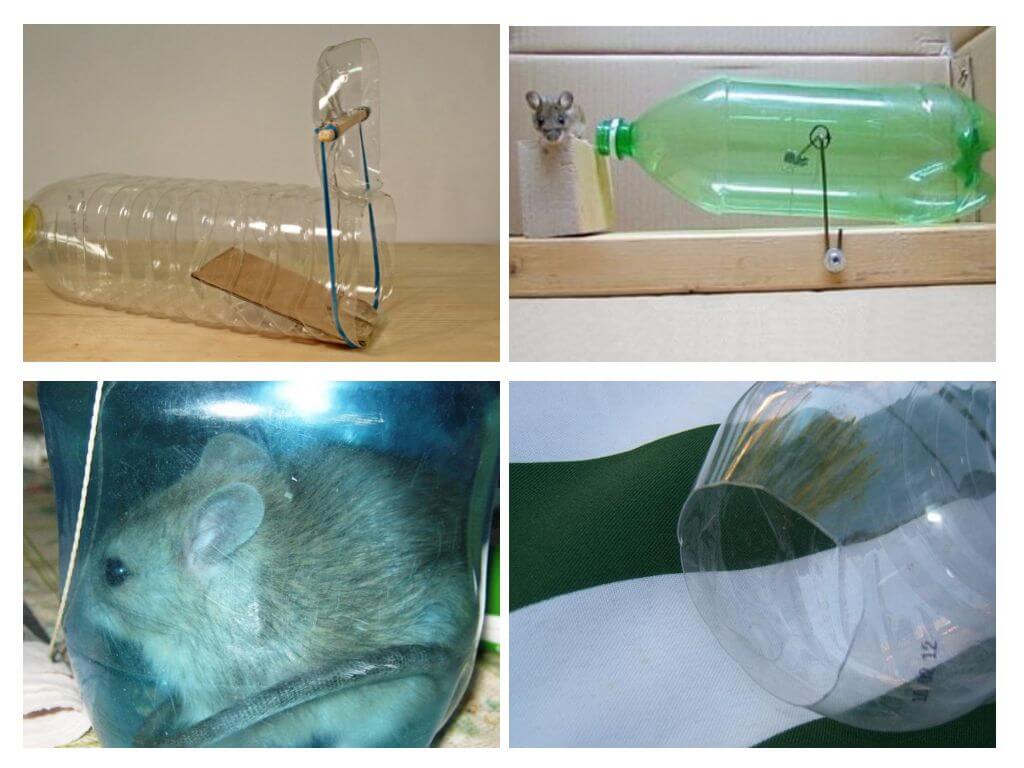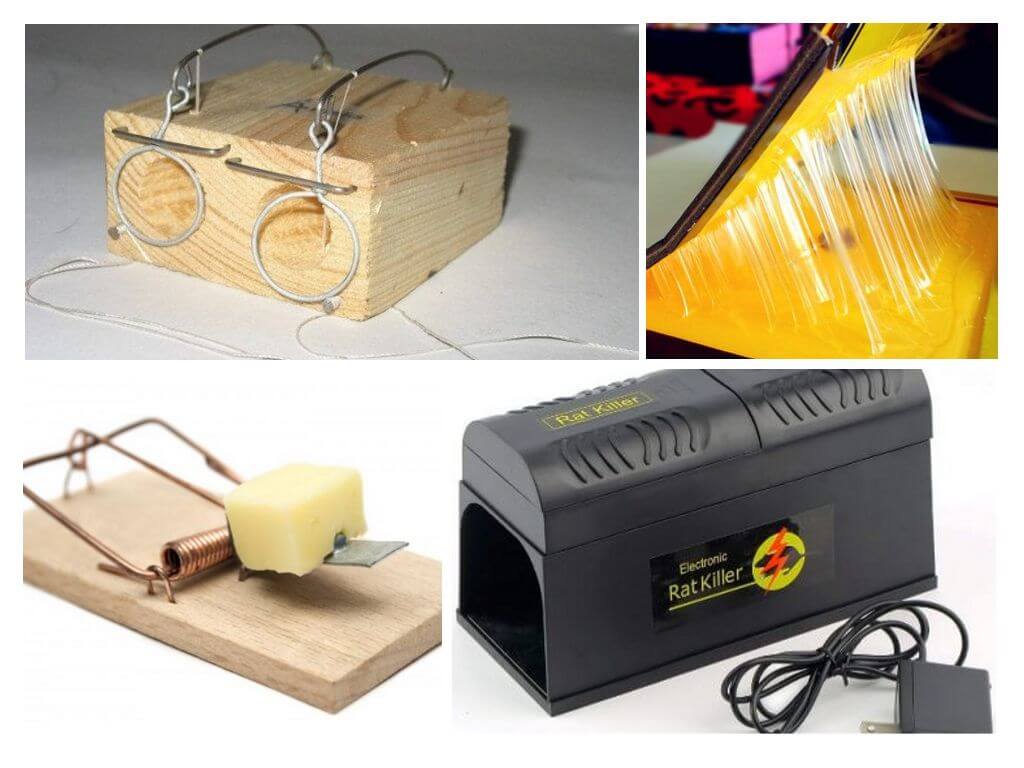How to make a mousetrap with your own hands
Content
- Lure for rodents
- Homemade traps
- Plastic bottle traps
- Mousetrap
“Mouse fuss,” which the owner hears in his house, is unlikely to bring joy to someone, because with the appearance of these pests one can expect a lot of trouble: spoiled food and packaging, gnawed furniture. It also increases the likelihood of various diseases caused by infections, often carried by mice.It is necessary to immediately take steps to destroy rodents, so the story of how to make a mousetrap with your own hands will interest many homeowners.
The virtues of self-made traps
Devices made from improvised means have many advantages in comparison with ready-made mousetraps or special designs. They are convenient and safe, because catching a rodent in a box or bottle at home is possible at any time of the day or night, and it’s not at all necessary for residents to leave the house. The use of chemicals with a strong odor always negatively affects the living in the house of small children and animals.
The main advantages of the mouse trap are the cheapness and availability of all the components, because finding a plastic bottle or a bucket in the house is very easy, and they are used many times without wasting money. In case of failure or failure, there is always the opportunity to try to make a very different model.
The secrets of cooking bait
Whatever homemade mousetraps are made, but the main thing in them is the best bait selection, thanks to which the mouse wants to go there.Despite the well-known children's fairy tales, in which cheese is the main delicacy for mice, this is not quite so. Mice do not eat cheese with such pleasure as dry products with a pungent smell:
- sunflower seeds;
- bread crusts soaked in vegetable oil;
- croutons with sesame oil;
- pieces of fried bacon or sausages;
- buckwheat, rice or wheat;
- nuts;
- fresh meat.
On a note!
When installing traps, it is important to consider the best ways to approach them so that the mouse in an apartment or house can easily get into the harvested device.
Trap types
There are many different ideas on how to make mousetrap designs. They can be made from the usual materials that exist in every household (see photo of mousetraps).
From buckets and cans
There are many variants of such traps. Nida most popular traps:
- The simplest mousetrap is done in a couple of minutes from a glass jar for 0.5-1 liter. Inside it must be put or attached with a twig bait on a string. The jar is turned upside down and the coin standing on the edge is placed on the bottom, it is better to choose a larger size so that the animal can slip inside.Such a structure is very unstable, and at the slightest movement of a rodent in an attempt to take food, the coin falls, and the bank covers it.
- A mousetrap from a bucket of water is made quite simple. In addition, you will need: a ruler, a strong wire and a needle, which is attached across to the ruler and used for support, it is put on the bucket from above. The lying ruler should reach the edge of the bucket with one end, and the second one sags in the air and the bait is put on it. The bucket itself is placed so that the animal can climb on the ruler, and then, reaching for the bait, fell into the bucket, into which you can pour a little water. If the bait is firmly attached to the ruler, then it will hold, and then the trap will be more effective and it will be able to catch several mice in a row.
- For the manufacture of a mousetrap from a bucket and paper, you will also need a piece of wooden plank, along which the animal will climb up. Thick paper or a sheet of drawing paper is placed on top and cut in the center into several segments in a circle, a piece of bait is placed in the center. The mouse climbs up the bar, tries to get food and falls through the cuts on paper down, where there is water at 5-7 cm depth.Similarly, you can use the glass and 3-liter jar.
From bottles
Plastic bottles - the most popular material used in the manufacture of traps. Usually they are made from one and a half, two and from a 5-liter bottle, and you can also use glass:- Very simple and easy to use mousetrap from a plastic bottle, the throat of which must be cut off in a narrow place. The bottle is placed on the corner of the table so that the part hangs over the edge, and the bait inside it lies on the bottom. The trap is attached with a rope, the length of which will allow it to hang over the floor. Climbing onto the table, the mouse will enter the bottle for food, the center of gravity will shift, and the trap will fall with the caught animal, hanging on a rope.
- Another mousetrap is made of one and a half - a plastic bottle of 1.5 liters, in which the neck is cut to a third of the height in the upper part, and then turned upside down. The parts must be fastened together with wire or glued together. A bait is placed inside the tank, and the throat is oiled. The mouse will surely climb over the food and fall down, and will not get back.
- Another trap is made of a plastic bottle in the following way: half of it is cut off, cuts are made in the lower part of the bottom in a circle every 2 cm in the form of pointed petals, which are folded inwards. After the mouse climbs inside for food, the sharp teeth of the petals will not allow it to climb back.
- You can catch a mouse in a bottle not only plastic: for this, you also use a bottle from “Champagne”, where you need to pour 25-30 ml of sunflower oil and, rotating in a circle, distribute it inside the walls. The bottle is placed at a slight inclination, resting his throat on a brick, it is better to fix it. The mouse, attracted by its favorite smell, climbs into the bottle with oil, from which, sliding along the thick walls, is no longer able to get out.
Wood traps
These traps are easy to make yourself:- The most common mouse trap can be made from a plywood board measuring 10x5x, 15 cm; a frame made of metal wire with a spring is attached to it. There must be a hook for “tasty food” and a retainer, which, after installing the bait, needs to be hooked onto the hook. When the mouse tries to steal food, a spring is triggered and nails it to a wooden base.
- The wooden mousetrap house is made of a bar of 180x100x60 mm in size into several cells at once (up to 5).First, in the bar, you need to drill holes for the passage of mice with a diameter of 3 cm and a depth of 6-7 cm. You also need pieces of wire and thread number 30. From the strong wire you need to make a loop that will attach to the house a strangulation of a thinner piece of wire. For mounting springs and hinges in the wooden bar drill holes.
In total, several sets of hinges, springs and strangulation are made by the number of holes. Thread is needed for tying a charged spring. The bait is placed inside the holes: when the rodents are trying to get food, they gnaw the string, the spring, together with the choke, is triggered and the automatic trap holds the mouse.
Electronic mousetrap
An electronic mousetrap with your own hands can be made by a host who has knowledge of working with electricity and similar devices. It is made with the help of a soldering iron, electrical circuit and electromagnet. Usually they are of two types:
- trap cellin which the mouse is lured, then the door closes and a signal sounds about its appearance in the cage;
- a mousetrap-killer, which, after the animal gets into it and the motion sensor is triggered, destroys it with an electric current discharge, a circuit such electric traps there is on the Internet.
Important!
In the manufacture of electronic devices should be aware of the safety rules when working with electricity, so as not to get into a risky for life situation.
Glue traps
Adhesive types of mousetraps are made on the basis of a special glue that can be bought at a hardware store. A sheet of cardboard, plywood or hard plastic is taken as the base, it needs to be spread. glue for mice, put food in the center. Getting to the "snacks", the rodent is firmly glued to the base. The disadvantage of the device is not quite a pleasant look and shrill squeak of a dying animal. You can make this glue with your own hands, by mixing vaseline, bituminous pitch, rosin and pine resin.

